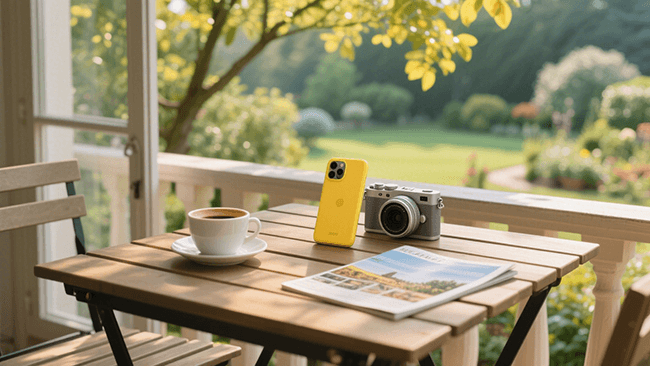The moment you pick up a camera, many beginners have fallen into similar predicaments: faced with a dazzling array of lenses, camera bodies, and accessories, it's like standing at the entrance of a maze, not knowing which path to choose; the voices of "I'm not good enough" and "don't start without professional equipment" keep circling in your mind, making the hand that presses the shutter hesitate; you've gone through countless tutorials but still have no clue, not knowing whether to start with composition or learn about lighting first, and even less clear about where to go next.
As days go by, the camera collects dust, and the enthusiasm to record the world gradually fades. But in fact, the journey of videography shouldn't be trapped by these problems. This article will help you dispel the fog of equipment selection, break the chains of self-imposed limitations, and lay out a clear starting path for you - allowing you to take your first step with unwavering confidence.
I. Equipment
To start your videography journey, all you need is a smartphone. In fact, many local businesses now use videos shot with smartphones and upload them to various platforms. If you log into Douyin or video accounts, 80% of the video content is actually shot with smartphones. So, don't let having only a smartphone stop your videography journey. At the same time, I recommend that you use your smartphone to recreate videos, improve your storytelling skills, and build a reference case library. Once your skills improve and you have the funds, you can invest in better equipment.

II. Mindset
Many beginners fall into three limiting beliefs, the most common of which is: "I'm not good enough, I'm afraid to take clients, and I'm worried that others won't like my videos." As a novice, it's better to adopt a service-based mindset: instead of obsessing over "will others reject me," think about "who or which businesses need video help but haven't found me yet"; instead of worrying about "no one will like my videos," focus on "who am I creating for? How can I make the video more valuable, interesting, and meaningful?"
Your advantage is "being close to needs" - using your existing skills to solve others' practical problems, such as shooting a promotional video for a small business or recording wonderful moments of community activities. Every service is an opportunity for growth. Rejection is not可怕; missing the possibility of helping others is more regrettable.

III. Thinking
Beginners often fall into the "passive learning trap": collecting dozens or even hundreds of tutorials on the platform, taking full notes, but never actually picking up the equipment to shoot. This behavior of "hoarding knowledge" may seem like progress, but in reality, it's getting farther away from practice.
The key to changing your thinking is to turn "having learned" into "having used": for example, after watching a camera movement tutorial, immediately find a scene around you to practice, and shoot a short video using the skills in 10 minutes; when you see a editing technique, try to replicate it with the materials in your phone. At the same time, let go of the obsession with "perfection." For a novice, "completing" is the greatest progress in itself. Every imperfect video is a signpost to help you find the direction for improvement.
IV. Roadmap
First Stage: Accumulate Works and Experience
As a beginner, it's normal to have no portfolio or client cases. The core of this stage is to shoot more, practice more, and display more: contact friends and family who trust you and shoot videos for them for free. After completion, upload the works to your personal homepage, and gradually build a portfolio that can showcase your abilities. There's no need to get stuck on market positioning or charging standards at this time; the focus is on learning "how to make eye-catching videos" in practice and accumulating experience in communicating and cooperating with clients.
Second Stage: Find Target Clients
Ask yourself two questions: "Who or which businesses do I want to help?" "How to make them aware of my existence?" For example, if you're good at shooting food videos, visit the blocks where local restaurants gather; if you focus on recording daily life of pets, contact pet hospitals or pet stores. Take the initiative to take the first step, and clients may find you.
Third Stage: Try Selling and Monetization
The essence of money is "value exchange." Think about the problems your target clients are facing (such as "new store opening lacks promotion" or "no one knows about the event") and how you can help them solve them with videos (such as "shoot a short video to attract customers" or "record event highlights to expand communication"). Selling is like muscle training; it may be unskilled or even hit a wall at first, but every attempt will make you better understand customer needs. Don't be afraid to start; as your confidence and ability improve, your services will naturally get the due rewards.
Related Tags: Photography experience
